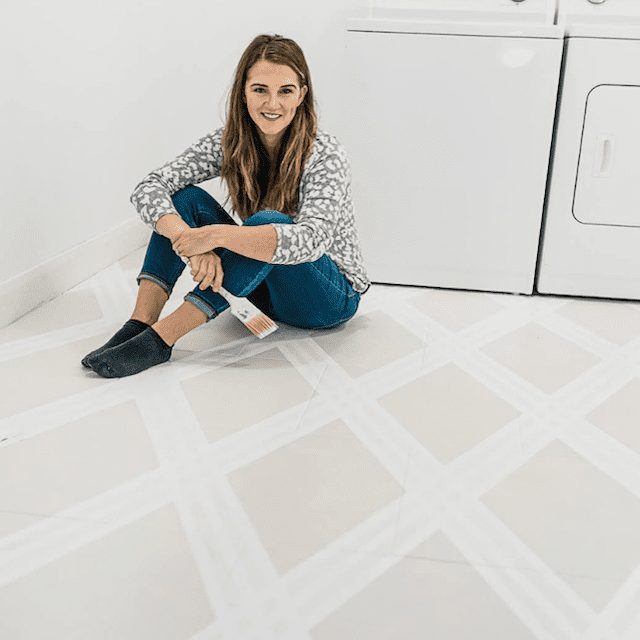If the tile in your laundry room isn’t ugly, is it really a laundry room?
If you haven’t utilized “the power of paint”, are you really a DIY expert?
If your laundry room is worthy of open-door status, you’re lucky. And rare. For everyone else, keep reading.
My sister-in-law was in need of a laundry room makeover. I swear her flooring is the default tile flooring for all laundry rooms everywhere. It’s not necessarily ugly, but it’s also not worthy of an open door.
Apart from paint, new flooring is the best way to upgrade a room. So, for my sister-in-law’s laundry room, I combined both and used “the power of paint” to create a “new” painted tile floor, and boom, it’s now at least cracked-open door status, and I earned my DIY expert badge.
This post includes affiliate links. If you purchase from these links, I may get a small commission from the seller. But the great thing is, this doesn’t cost you any extra money!
SUPPLIES
- Heavy duty rubber gloves
- Chip brush
- Etching cream
- Abrasive cleaner like Bar Keepers Friend, Comet, or The Pink Stuff
- Scotch pad
- Large sponge
- Paint brush
- Stencil brush
- Measuring tape
- Plastic putty knife
- 1 ” Delicate Surface painters tape
- Normal painters tape
- Paint roller with a nap appropriate for your floor’s texture
- Behr premium concrete and garage self-priming 1-part epoxy paint
HOW TO PREP TILE OR LINOLEUM FOR PAINT
If you haven’t painted tile before, your laundry room is a great place to practice. The area size is minimal, as is the foot traffic, and it’s not a must-be-functional-at-all-times space. I can’t guarantee that your flooring will behave the same as mine did, so you may need to make some adjustments to your process.
Here’s the tile I was working with:
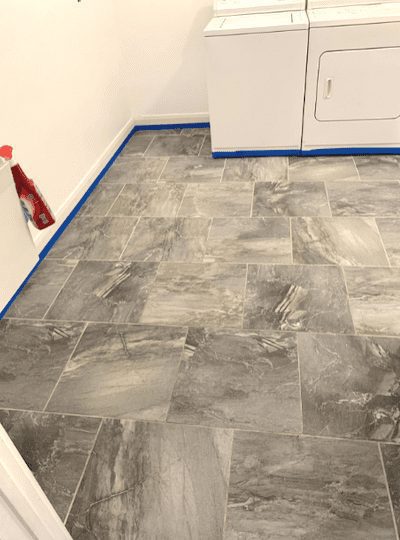
I didn’t bother to move the washer and dryer since they were both centered on the only wall with hookups, so it was safe to assume I could just paint around them. If you plan to get a new washer and dryer in the future, you may want to take your current set out so you can paint the entire floor since the footprint of the new appliances may be different that what you own now.
I didn’t know if the tile was ceramic or porcelain, but it didn’t really matter because it had a sheen that wouldn’t allow for paint adhesion.
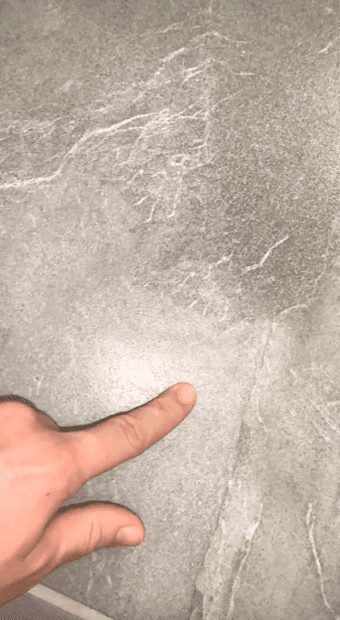
The sheen could be removed with a sander or etching cream. I chose the latter. If I had chosen to sand, I’d have used an orbital sander with 60 grit sandpaper. And, after a thorough clean up, I’d back up all that work with a de-glosser.
First step is to thoroughly clean the floor. I did a thorough sweeping and made sure I cleaned as far under the washer and dryer as I could reach. Then I mopped the floor with an abrasive cleaner. Bar Keepers Friend, Comet, or The Pink Stuff work well.
After it’s dry, I applied the etching cream. This stuff is potent. It can burn your skin and blind your eyes. I wore heavy duty rubber gloves and used a chip brush to apply the etching cream in sections.
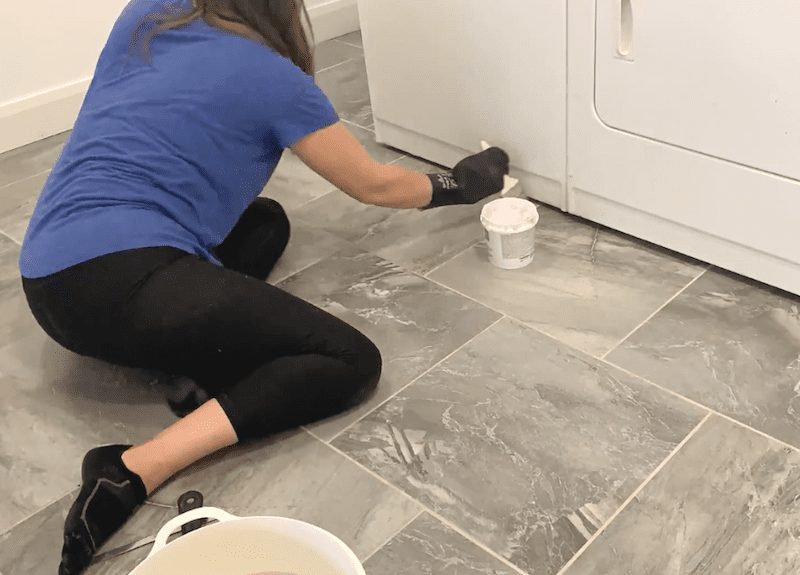
The cream really shouldn’t be left on for more than 5 minutes because when it’s dry, it becomes difficult to remove. I let the etching cream do its work for a few minutes, and then scraped it off with a plastic spatula.
I was liberal with the amount I used, but that was fine because the gunk can be scraped back into the container to use again.
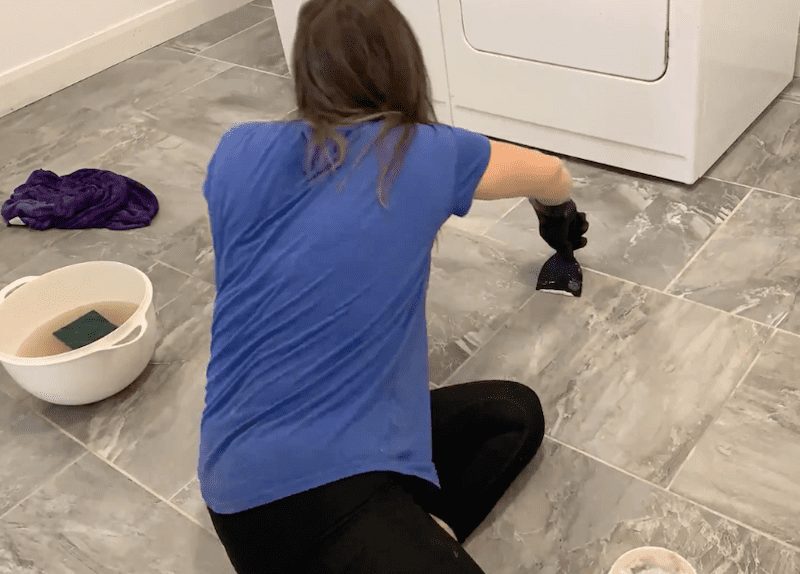
After I had scraped the entire tile floor, I went back over everything with a scotch pad, water, and an old towel to scrub whatever etching cream residue was left. Make sure to leave zero residue because it will prevent your paint from adhering.
The last prepping that needed to be done was to tape off the baseboards and the bottom of the washer and dryer.
HOW TO APPLY THE FIRST COAT OF PAINT ON TILE OR LINOLEUM FLOORS
I used a high nap roller and Behr premium interior/exterior concrete & garage self-priming 1-part epoxy paint in pure white (the product is awesome enough to warrant that many words in its name). Follow the instructions for how long to wait between coats. I was in a drier climate, so the dry time was pretty quick, but it definitely requires more time to dry than regular paint. To save your back, use a paint roller with an extra-long adjustable handle.
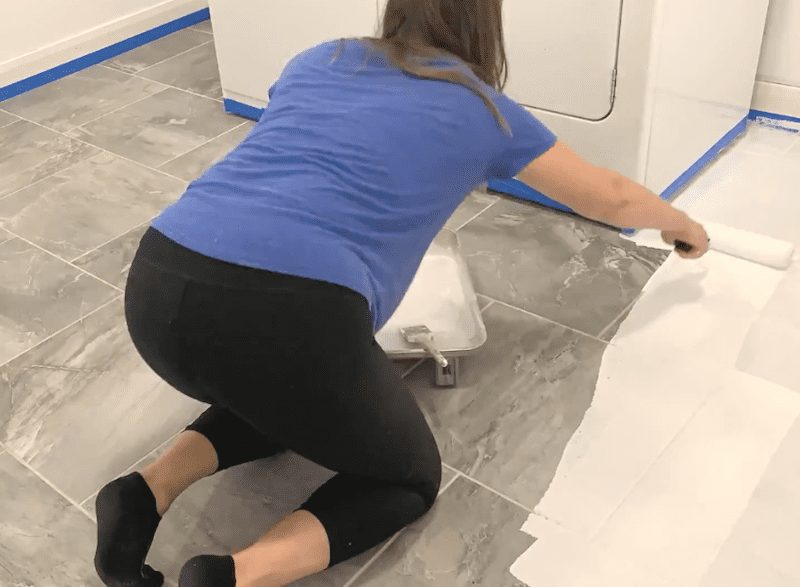
The tile floor needed three coats of paint. You can clearly see the coverage progression on the painted floor.
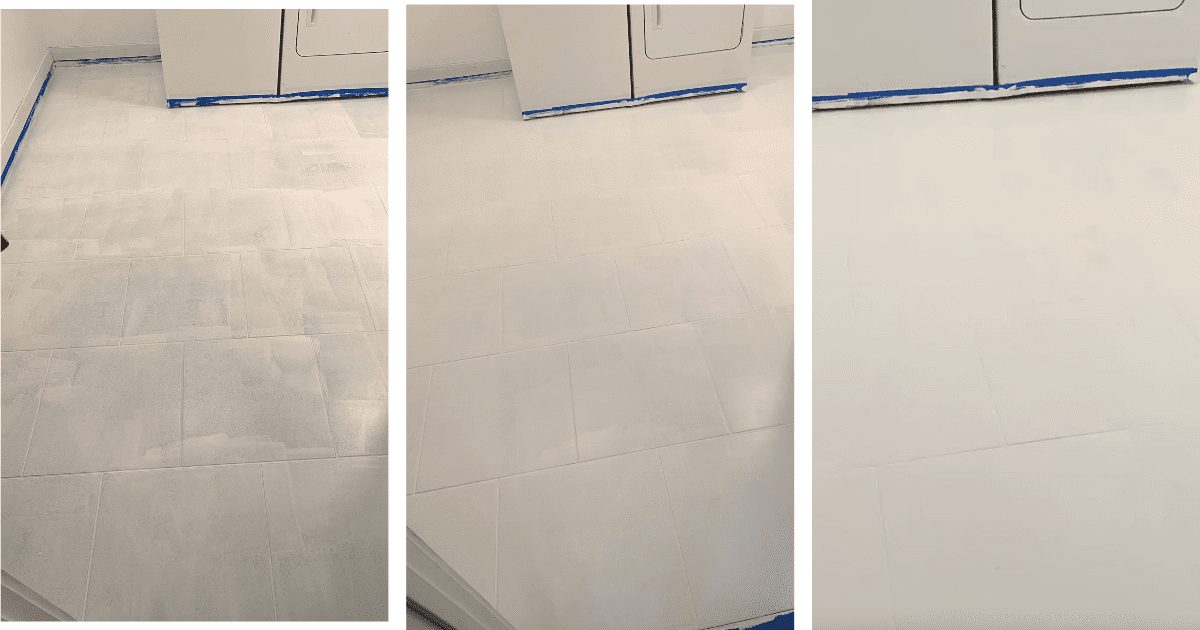
If you’re painting over tile rather than linoleum, make sure you really get the primer into the grout lines. It’s much easier to use an angled paint brush to paint the corners around the edges of the room.
Something to be aware of is that dust floating around your house may land in your paint. If you can, close the room’s door while the floor is drying. This will prevent whatever dirt and hair you have floating around in your house from settling into your paint forever.
Pro Tip: Don’t leave your phone on top of the washing machine while you’re painting because eventually you’ll paint yourself out of the room and not be able to reach your phone. You’ll either be without a phone for the day, or you’ll ruin your paint job. I ruined my paint job. If you look closely, you can barely make out a footprint on the right.
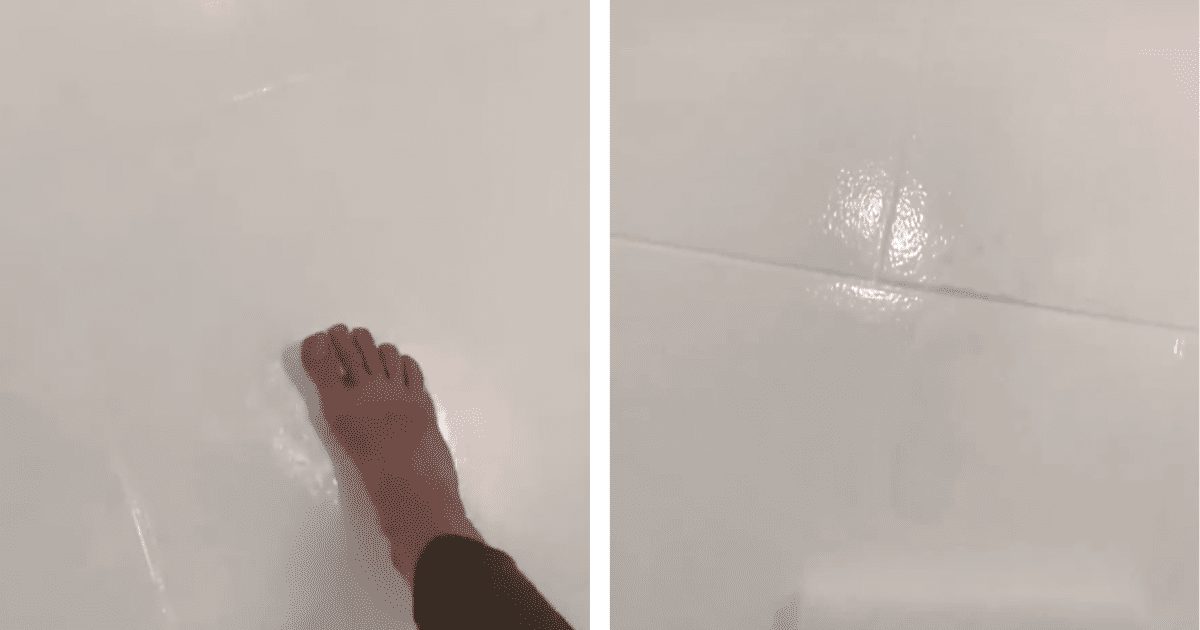
I wasn’t too worried because the floor would be getting additional coats of paint. Even at this point, the painted tile floor looks so much better!
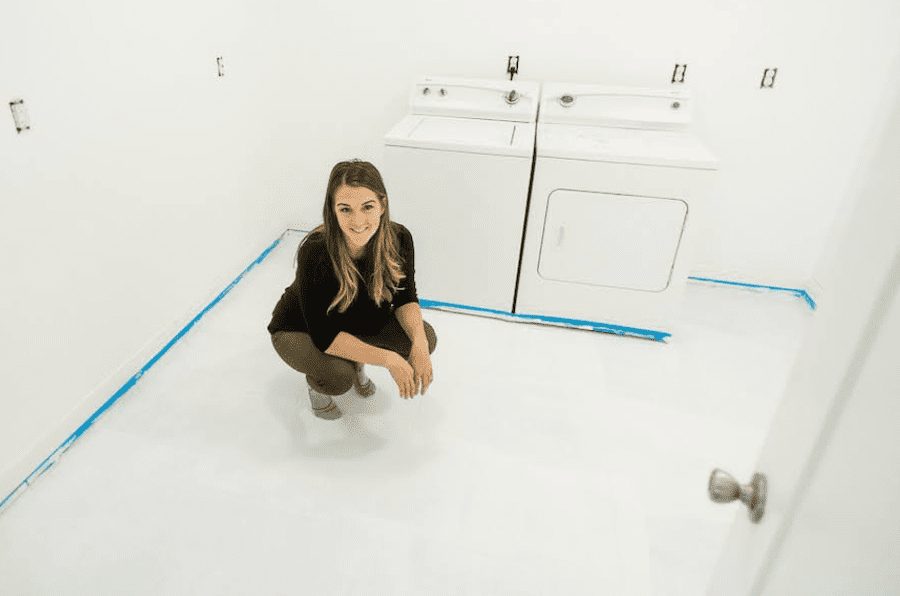
HOW TO TAPE OFF YOUR DESIGN
I taped up a few different designs to see which look I liked best. Here are a few painted floor idea patterns I came up with:
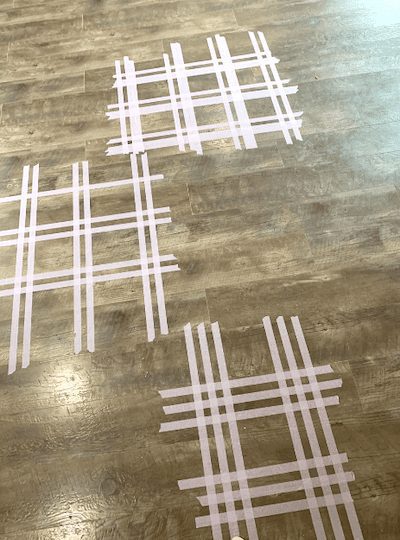
However, I ultimately settled on this painted floor pattern as my inspiration:
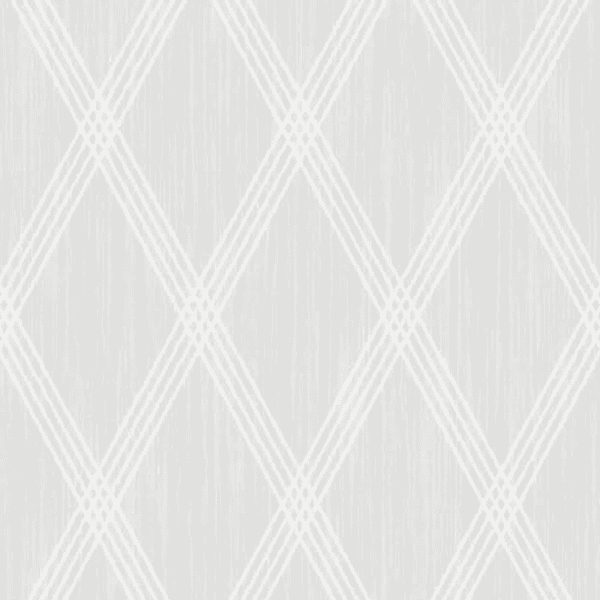
Regular painters tape is too harsh for a painted floor design, so I used delicate surface painter’s tape made by Scotch.
Since every room is shaped differently, there’s no specific tutorial for laying down the tape for your floor pattern, but I do have a few tips: use the grout lines and the tile lines as guides since they’re straight and easy to see. I also used a measuring tape to make sure I still had the right spacing. Also, use a “spacer”. In this case, my spacer was a piece of tape.
The tape is 1 inch wide, so to keep it easy for me, my skinnier pattern lines were spaced 1 inch wide. I laid little pieces of tape on either side of the long lines of tape to make sure everything was even.
To prevent paint seepage, don’t pull the tape too tight over the grout lines. The tape obviously needs to be pressed firmly into the tile, but even more so into the grout. Also, lay out your tape one direction first, and then the other on top. That way you won’t run into problems when you’re pulling your tape off.
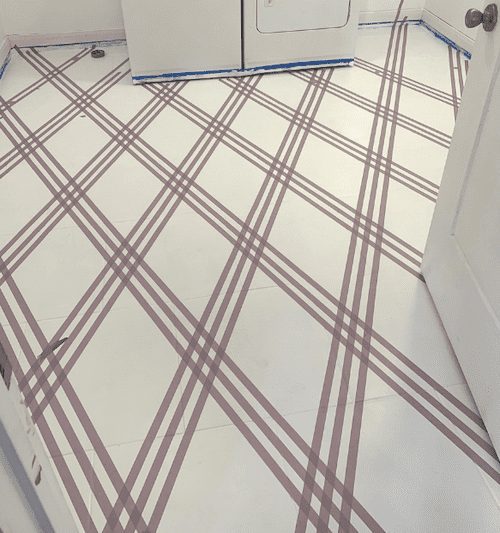
HOW TO PAINT OVER THE TAPE
After I had laid all the tape, I did one last thin coat of white over everything. This is the best trick for any paint job when you want to prevent paint seepage. All the microscopic openings along the edge of tape were now “filled” with white paint, essentially creating a seal.
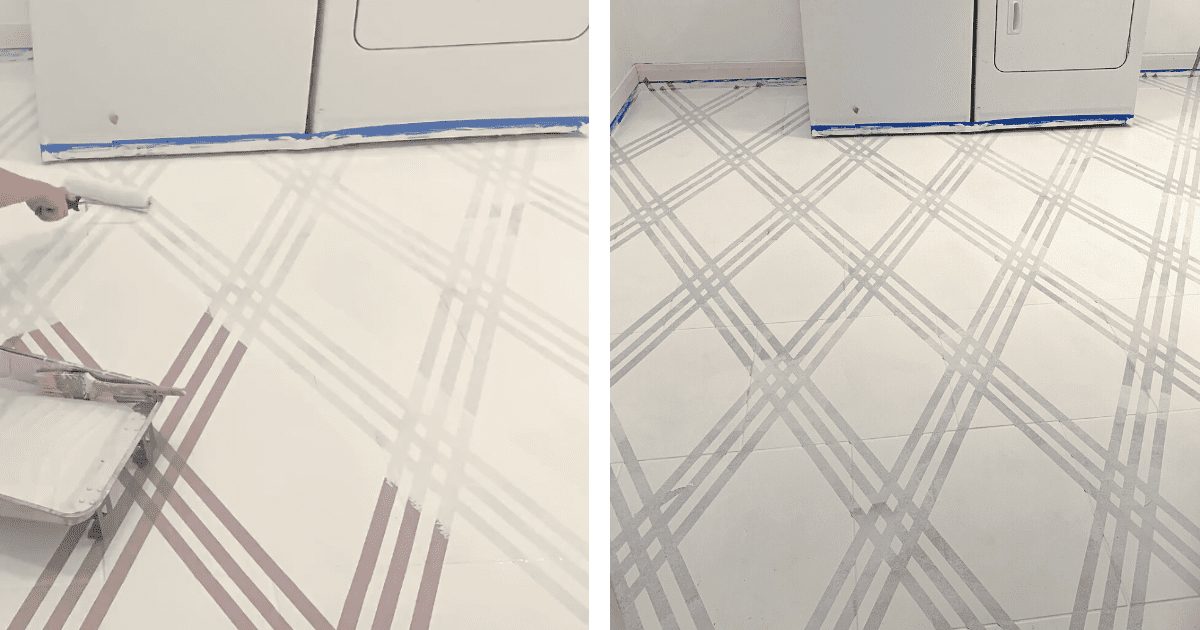
After that coat was completely dry, it was time to paint the color. I had originally tinted another can of the Behr premium epoxy paint the color of Perfect Taupe, also by Behr, but I quickly realized it was too dark for an already dark laundry room.

So, I diluted the taupe with white from the other can until I felt it was light enough. The end ratio was about 3 parts white to 1 part taupe, and I painted the large diamonds with this new color.
Since I wanted the color between the lines even lighter, I further diluted the taupe until I felt like it was enough of a contrast. Everything needed two coats of paint.
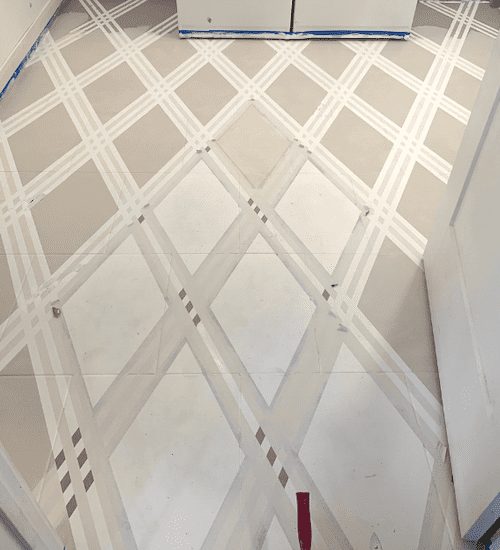
I highly recommend using a paint brush or stencil brush to dab the color along the tape lines, and a smaller roller for inside the diamonds. After the second coat had been applied, I peeled up the tape from the floor and the baseboards as I went along, before the paint had time to dry.
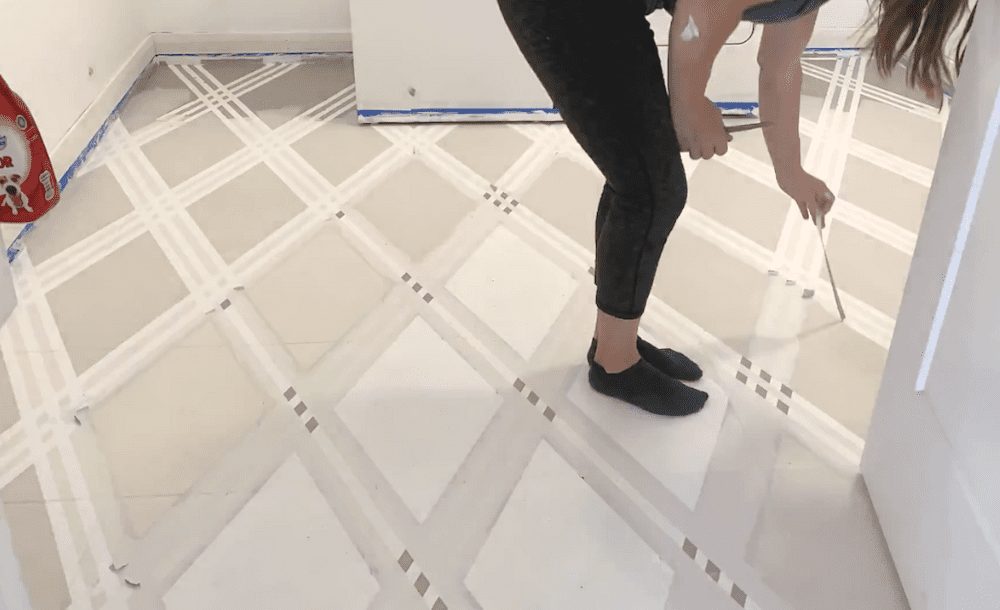
Some areas totally needed to be touched up, but honestly the touch ups were minimal and easy to do with a tiny brush. I waited a day before I was okay with any foot traffic.
The Behr epoxy paint doesn’t need a top coat, and to answer your question, yes, it can be mopped over.
THE POWER OF PAINT my friends.
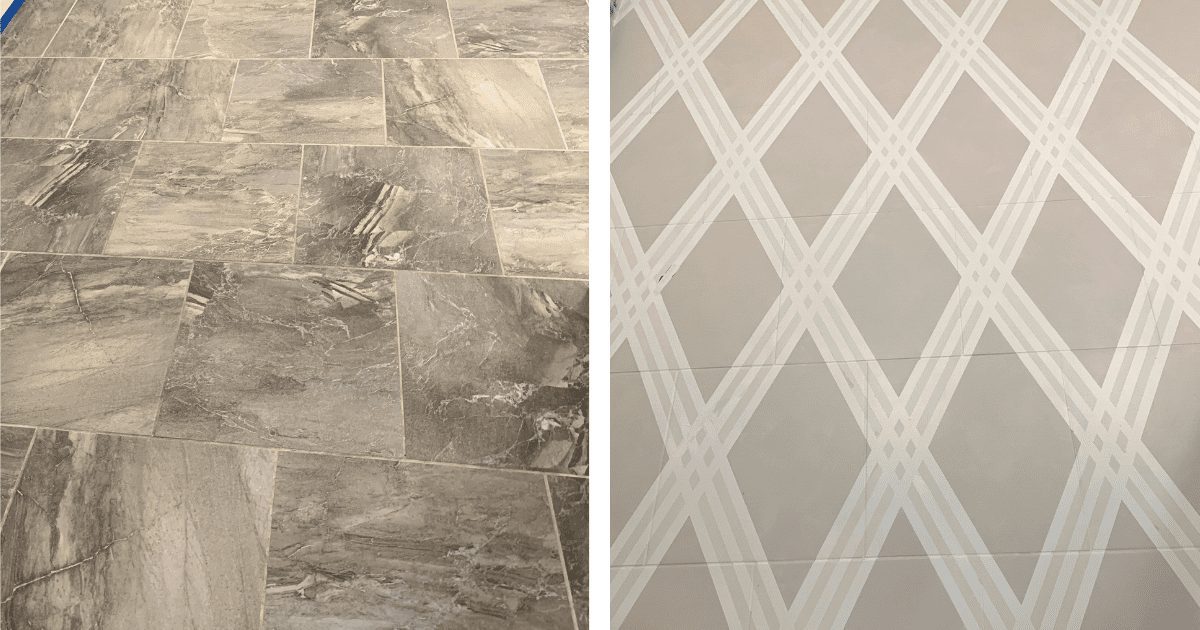
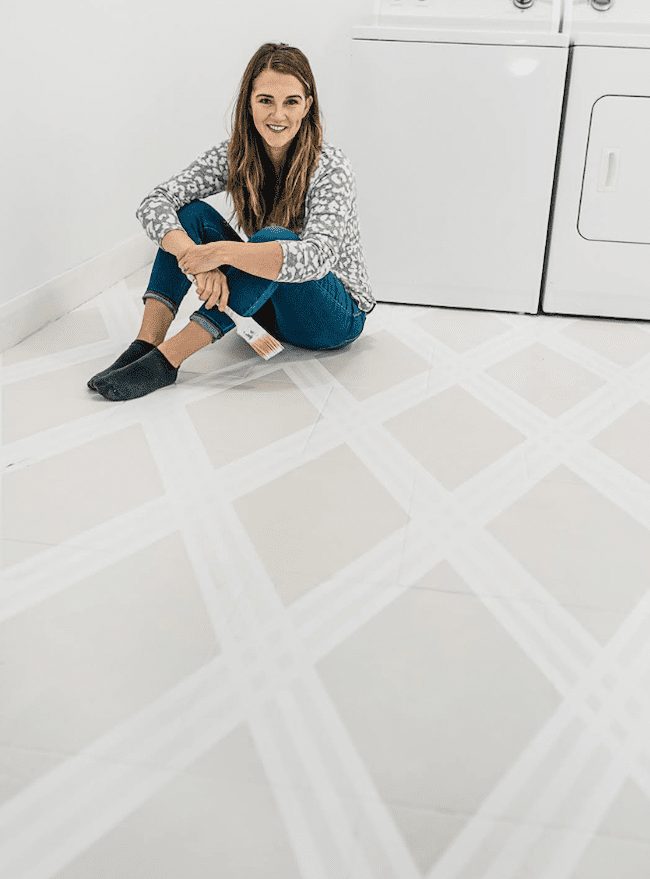
Feel free to leave a comment if you liked this post or have any questions. And don’t leave until you subscribe to my newsletter!
I used a different method when I painted my bathroom tile floor a few years ago. Check it out!
If you want more project ideas, follow me on Instagram!
